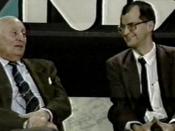If the production techniques have not been expertly designed, audiences will not consider the ideas.
Roman Polanski, director of the much celebrated film, The Pianist, has expertly crafted and designed his production techniques in such a way that the audience considers his ideas. The Pianist accurately recounts the memoirs of Wladyslaw Szpilman, a talented Polish-Jew pianist who survives the invasion on Warsaw through focusing on his passion for music. Polanski has used a number production techniques atypical of Hollywood films centred on the Holocaust. Polanski employs length of shot, depth of shot lighting and colour to highlight the key ideas of survival, loss and circumstances. These techniques capture the detached tone of Szpilman's memoir, which Polanski himself described as being 'without sentimentalism or embellishments.' Polanski has a unique connection to Szpilman's story as a child survivor of WWII. He felt he could relate to Szpilman's survival as it echoed his own along with his passions that kept his hope alive.
Polanski cleverly weaves his own memories into the film while remaining true to Szpilman's life and story.
The production technique of length of shot has been designed by Polanski in order to capture the audience's attention and portray ideas of survival. The director shows the audience what truly happened to Szpilman and the Jews without allowing the violence and horror of the Holocaust to linger on the screen. The realism shown in the film is Szpilman's realism and the scenes witnessed by audiences are shown from Szpilman's perspective. An example of this is when Szpilman and his family look through their three story apartment window and witness a Jewish family being ordered to stand at the command of Nazi officers. One family member is an old man in a wheelchair, and while obviously being unable to comply with...


